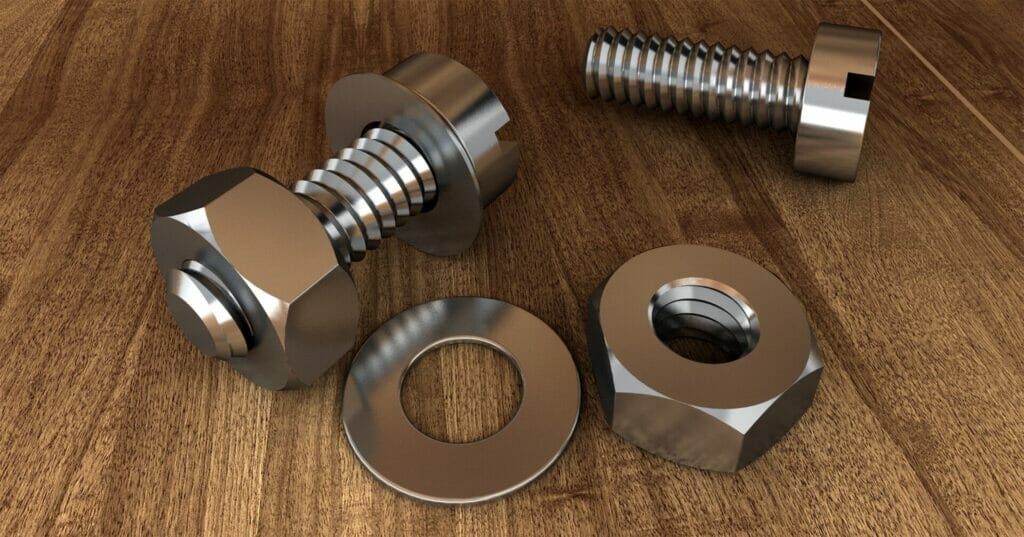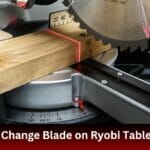To figure out how to change a table saw blade without wrench, you can use alternative tools such as pliers, a screwdriver, or locking pliers. After all, table saws have a variety of uses, especially in obtaining the best cutting results. To achieve those, you will have to use the optimum blade in your table saw, and eventually, the blade will need changing, which is the topic we’re focusing on.
Step 1: Know When To Change The Blade
Before delving into the details regarding how to change a table saw blade, it’s important to know when you should change it.
For example, the table saw blade’s sharpness might decline, the blade’s teeth may deteriorate, and other issues with the table saw blade may arise. Luckily, in that situation, the table saw blade can be sharpened.
However, after a particular amount of time, most table saws’ blades will become obsolete. This is when you should definitely take the time to change the table saw blade.
Though we do recommend keeping in mind the length of time before that so you know when the case is strong enough to need replacement versus when you can deal with it with alignment. For that, check out the guide on aligning a table saw blade!
Moreover, to be able to apply this step well, you’ll need to have a knowledge of the different types and thicknesses of the blades since different factors play a different role in how soon you might want to change the blade in the first place. For that, we recommend checking out our guide on table saw blade thicknesses.

Step 2: Turn the power off
When using a power tool, there should be a priority for safety. So first, you have to shut down the power supply before you can start to change the blade. To do so, detach your power supply cord from the sockets and make sure there is no electricity running through the machine.
Interested in power and watts? Learn more about how many watts a table saw uses!

Step 3: Remove the cover plate
Every woodworking professional knows how table saws come in different shapes and models. When you start your new project, you might have trouble identifying your blade plate. The best way is to read the user’s manual thoroughly. After that, you’ll know which blade plate is correct!
For most table saws, the blade plate is typically on top of the power tools’ base. The blade plates have two screws for mounting them securely on the blade. You can just unscrew them and remove the metal plate.

Step 4: Removing the Blade
Once the metal cover is gone, it’s time to remove the table saw blade without a wrench. For this, it’s best to increase your lifting capacity to the maximum possible for easy removal.
Keep in mind that the arbor nut is used to keep the blade installed. To change the blade, the arbor nut must be removed first.
It might seem difficult to change the table saw blade without an adjustable wrench, but here are some options for dealing with this situation effectively.
Methods of Removing Arbor Nuts Without An Arbor Wrench:
- If you don’t have the wrench, a wooden block can be used to hold the table saw blade in its normal position. This will stop the blade from moving while you loosen the arbor nut.
- A blade lock can also be used for this purpose. There is a second function called ‘arbor lock’ in some smaller table saw models. This alternative will achieve the same result.
- Similarly, using a pair of pliers to remove the arbor nut is another option. You can loosen the arbor nut with the plier first, then untighten it entirely using your fingers.

Step 5: Putting the New Blade in Place
Simply place the new table saw blade in the same spot as the previous blade’s placement. When installing the new blade, you must be very careful to ensure that it is installed in the exact same area as the prior blade.
You can also replace the arbor nut and washer if necessary, depending on their condition.
Start tightening the elements once they’re all in place. When screwing them back together, make sure you rotate clockwise and tighten them as much as possible. You can do so by employing the same methods used to unscrew the nuts.
Step 6: Test the Table Saw
Run a blank piece of material through the throat plate to evaluate blade alignment after plugging in the saw. There should be no snagging or binding on the way. You’ll need to change your blade height to compensate for the snagging if it doesn’t cut easily. To make it easy for yourself, learn more about how high a table saw should be!
This depends on what you’re missing, but if it’s still proving difficult, another cause could be a clogged throat plate, which should be replaced if this is the case.

Things to keep in mind while Figuring Out How To Change Table Saw Blade Without Wrench
- Remember to note the details of the table saw so you can change the blade afterward. One important aspect is the weight because it can impact how you handle the saw. Learn more about how much a table saw should weigh!
- When performing any sawing operations or changing the blade, always wear goggles or safety glasses. If possible, safety glasses should be non-vented and include side shields. To avoid major harm, ensure the blade guard is in position before touching the machine.
- Keep your finger away from the edge of the saw blade at all times – for power saws with an exposed or free spinning blade, use push sticks if necessary; power saw blades are deadly!
- Before turning on a table saw, make sure the lower guard, splitter (if necessary), and spreader are all in good working order (if equipped).
Check to see if they work properly, such as the arm moving freely, the teeth pointing in the right direction, and so on. Ensure the rip fence is positioned properly and securely fastened to avoid damaging the blade at any time. - Always disconnect the table saw before installing or modifying attachments, replacing blades, orbits, or moving it.
- Feel free to read more about Table Saw Safety and Operation as well!
The Bottom Line
A table saw is every carpenter’s most useful instrument, and it is utilized in practically every project. However, the project will only be completed on time if all of the tools are in good working order.
An obsolete table saw blade would usually cut slowly and unevenly, which no one appreciates. With the help of this straightforward guide on how to change table saw blade without wrench, you can now replace the table saw blade on your own in a matter of minutes!








1 thought on “How To Change Table Saw Blade Without Wrench?”